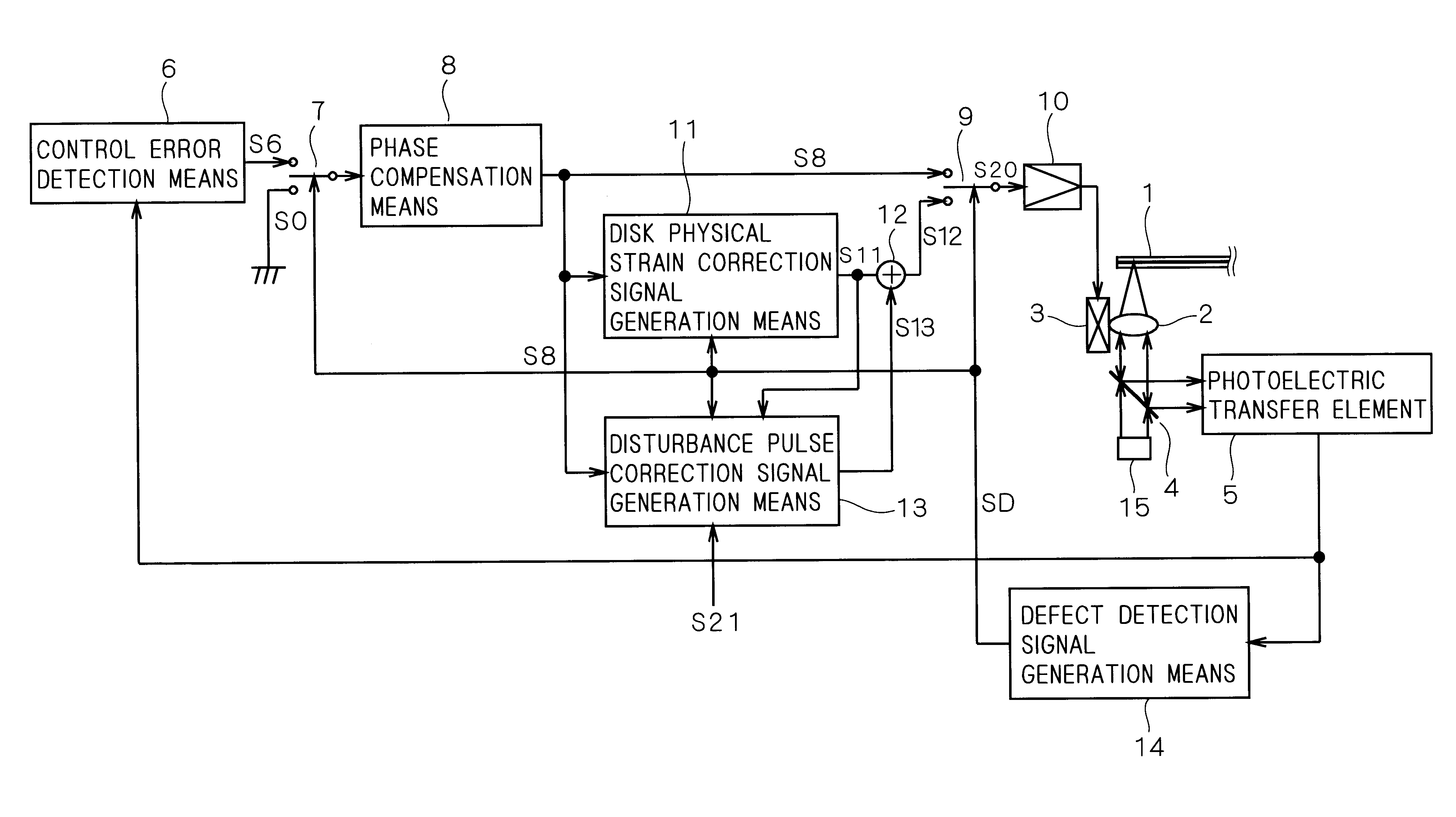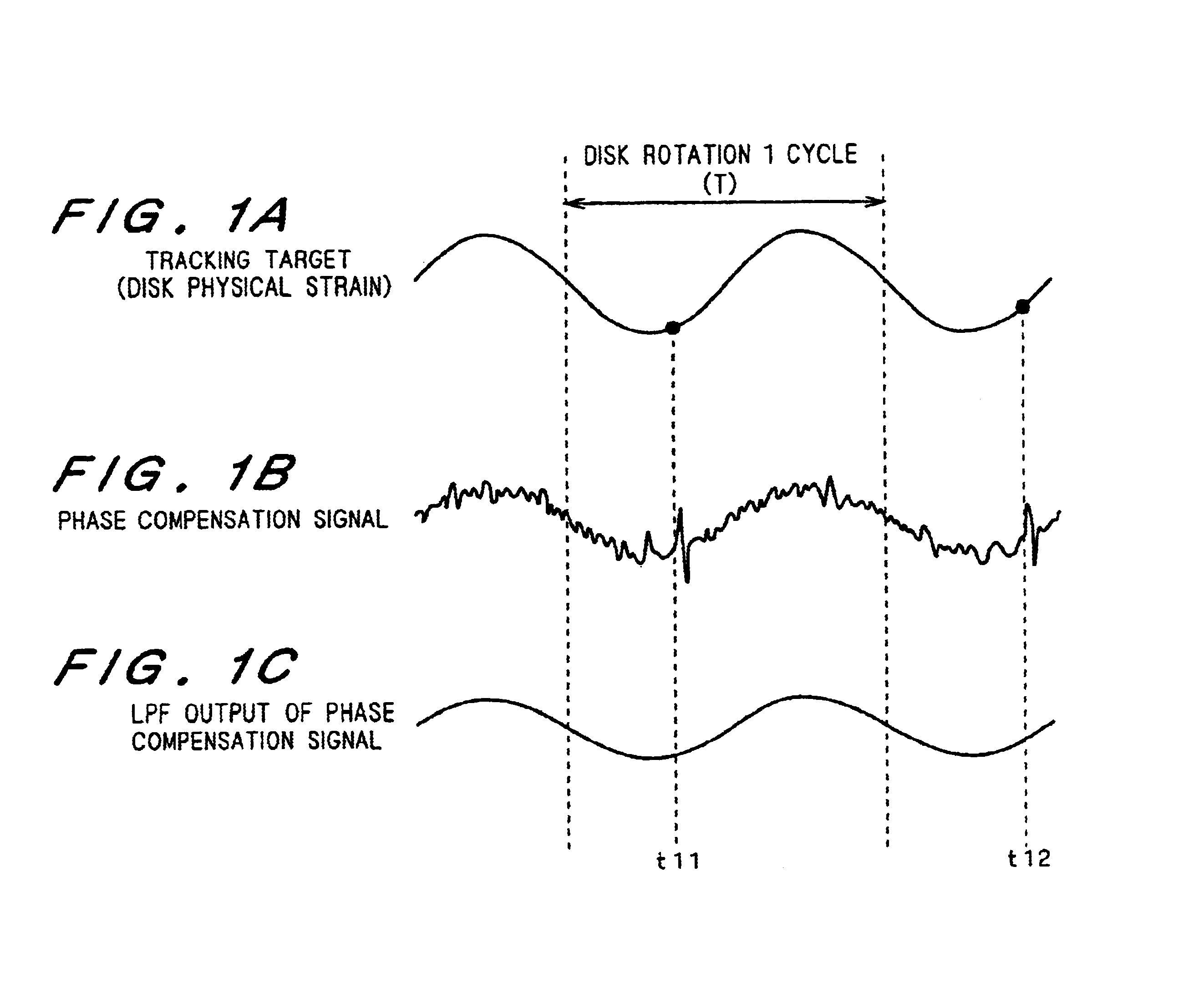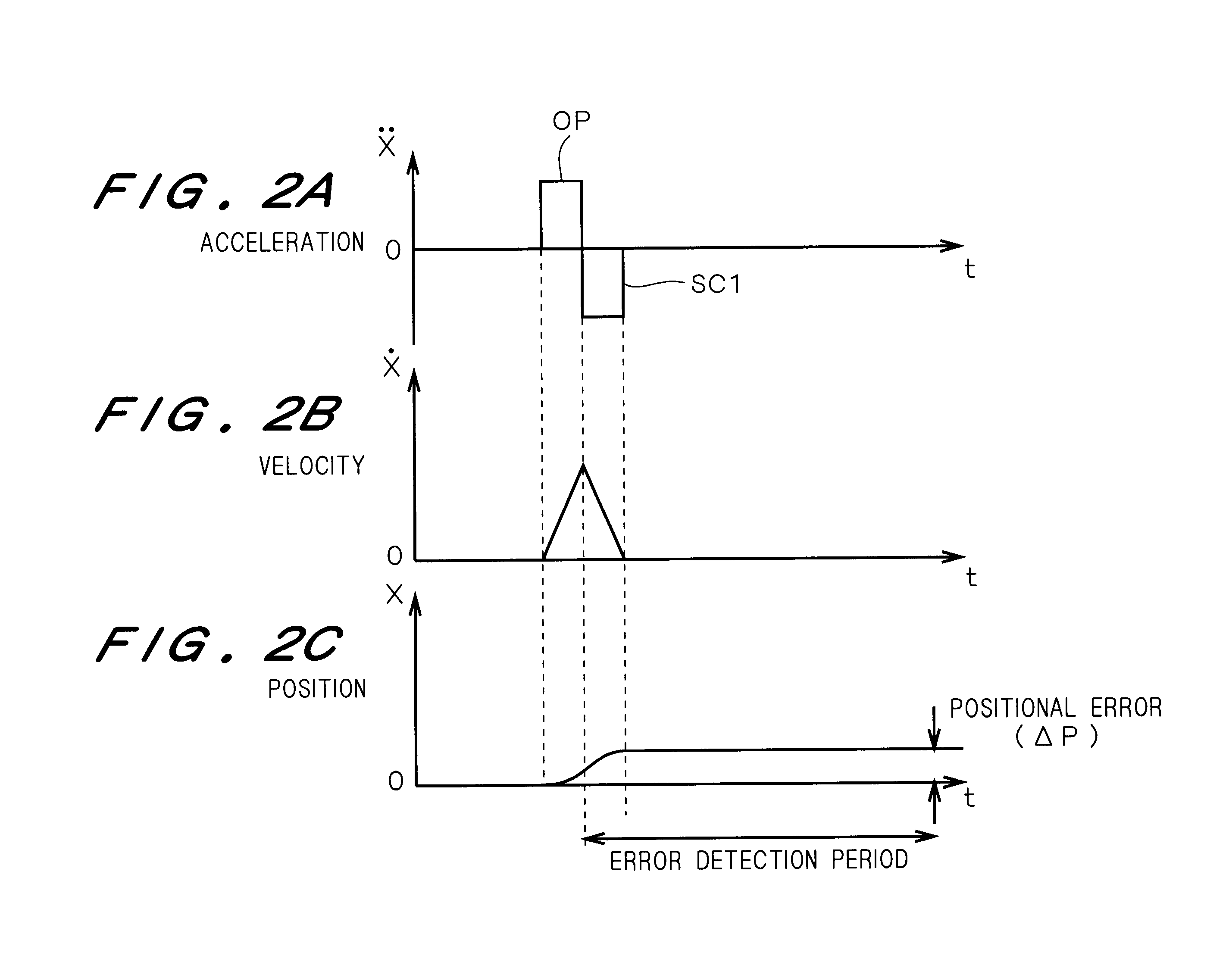Optical disk device for data defect detection and use
a technology of optical disk and data, applied in the direction of digital signal error detection/correction, instruments, recording signal processing, etc., can solve the problems of conventional defect compensation device, inoperable control state, inability to carry out disturbance error interpolation, etc., to achieve complete cancellation of adverse effects, control of driving means, and defect detection period
- Summary
- Abstract
- Description
- Claims
- Application Information
AI Technical Summary
Benefits of technology
Problems solved by technology
Method used
Image
Examples
first preferred embodiment
[0079]FIG. 4 is a block diagram that shows a construction of a disk device in accordance with the first preferred embodiment of the present invention. As illustrated in this Figure, a control loop switch 7, which receives an error signal S6 and a fixed electric potential signal S0 from an error detection means 6, supplies the fixed electric potential signal S0 to a phase compensation means 8 during the defect detection period indicating a defect detection state with the defect detection signal SD going “high”, while it supplies the error signal S6 to the phase compensation means 8 during the normal period indicating a normal state with the defect detection signal SD going “low”.
[0080]Based upon the signal obtained through a control loop switch 7, the phase compensation means 8 generates a phase compensation signal S8.
[0081]Upon receipt of the phase compensation signal S8 and the defect detection signal SD, the disk physical strain correction signal generation means 11 generates a di...
second preferred embodiment
[0101]The second preferred embodiment relates to an optical disk device which can realize a defect compensation operation with higher precision. As already explained by reference to FIG. 3A to 3C, in the arrangement of the second preferred embodiment, the means (2) satisfying both the conditions (1) and (2) required for a stable, positive defect compensation is adopted, and with respect to the disturbance pulse correction signal, not only the correction pulse SC1, but also the correction pulses SC2 and SC3 are successively applied. The above-mentioned arrangement is realized by modifying the contents of the control of the memory output control means 13c in the first preferred embodiment in the following manner so as to satisfy the means (2).
[0102]In the same manner as the first preferred embodiment, the disturbance pulse memory means 13b of the second preferred embodiment is also constituted by n number of registers R0 to R(n−1), each having a predetermined bits. At the time when th...
third preferred embodiment
[0111]It has already been described that the disturbance pulse is caused by a disturbance error mixed into the error signal S6 at the defect start. Therefore, the time length of the disturbance pulse forms a function dependant on the reproducing linear velocity (linear velocity of the disk 1 at the time of reproduction), and it is clear that as the linear velocity becomes faster, the time length of the disturbance pulse becomes shorter and as the linear velocity becomes slower, the time length of the disturbance pulse becomes longer. Consequently, it is preferable to vary the disturbance pulse memory time in response to the linear velocity. In other words, the third preferred embodiment realizes an optical disk device that can store disturbance pulses accurately.
[0112]The optical disk device of the third preferred embodiment has the same structure as that of the first and second preferred embodiments, except that only the construction of the disturbance pulse correction signal gener...
PUM
| Property | Measurement | Unit |
|---|---|---|
| defect | aaaaa | aaaaa |
| frequency | aaaaa | aaaaa |
| linear velocity | aaaaa | aaaaa |
Abstract
Description
Claims
Application Information
 Login to View More
Login to View More - R&D
- Intellectual Property
- Life Sciences
- Materials
- Tech Scout
- Unparalleled Data Quality
- Higher Quality Content
- 60% Fewer Hallucinations
Browse by: Latest US Patents, China's latest patents, Technical Efficacy Thesaurus, Application Domain, Technology Topic, Popular Technical Reports.
© 2025 PatSnap. All rights reserved.Legal|Privacy policy|Modern Slavery Act Transparency Statement|Sitemap|About US| Contact US: help@patsnap.com



